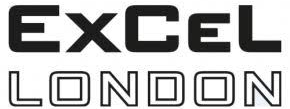Third-party or in-house food delivery: pros and cons
How can our exhibitor Deliverect help you?
In an era of convenience, online ordering systems, self-service kiosks and mobile platforms have become key to give the customers what they crave the most: a fast, personalized and convenient food experience through delivery and/or takeaway. With allegedly 70% of all orders being off-premise by 2020*, restaurants should dig into what their options are when it comes to off-premise dining, in particular delivery.
But should your restaurant opt for in-house delivery operations or use one or multiple third-party platforms like Uber Eats, Glovo or Deliveroo? Let’s compare your options.
Third-party delivery pros and cons
Pros
- Hiring a third party for your deliveries can bring you new business, as each platform comes with its own loyal users and target audiences, some of which you may not be able to reach on your own. This increased discoverability can be especially handy for small-size businesses and startups. Moreover, you can work with as many delivery partners as needed, so you can expand your reach considerably.
- Third-party apps offer vast experience and resources, as well as expertise that your restaurant just may not have (yet). Teaming up with an external party means you can scale your business more easily, building on your partner’s experience and following their approach, which has already been well established and tested.
- Outsourcing delivery allows you to focus on your core business: preparing delicious food and creating an unforgettable customer experience. While offering in-house delivery comes with many benefits, it may take away focus from your end product - which, ultimately, is what your customers will remember you by.
- Partnering with online ordering platforms certainly isn’t free, but it does give you the opportunity to avoid investments on a number of fronts. In exchange for commission fees, you’ll be able to benefit from a ready-made infrastructure, including a network of couriers and riders, a range of packaging materials, delivery tracking, secure payment methods, and so on.
Cons
- Third-party delivery companies are known to often charge hefty commission fees. Depending on the business you are running and your margins, these fees may not be feasible, even considering the infrastructure and experience you’ll get in return.
- Many restaurant owners fear the loss of control over the delivery experience. Your business has nothing to say about delivery staff training or the way your food will be delivered to your customer. In case of a bad delivery experience, your business can be impacted even though you weren’t responsible for it. And with 80% of customers saying they’ll blame the restaurant, not the delivery service if anything goes wrong, that’s an important consideration.
- Hiring an external delivery service can result in a loss of communication with your end customer. Maintaining a positive brand awareness and delivering the customer experience that you want becomes more difficult, as you have no direct line of communication with your diners.
In-house delivery pros and cons
Pros
- A whopping 78% of US delivery orders are placed through the restaurant itself, while only 22% of orders are made through third-party delivery services*. That means that if your restaurant was to set up a delivery operation of its own, you could potentially reach a vast audience of customers looking to order directly from your restaurant.
- By not outsourcing delivery, your restaurant can take back control over the entire delivery experience. Today, creating a top-notch experience for the customer is crucial for getting them to order again, so keeping the delivery process in house may be a wise decision. Not only do you get to train your delivery staff, you’ll also be able to choose your own business model and product offering.
- Choosing in-house delivery removes the communication barriers that come with third-party delivery. You’ll be able to stay in touch with your customer throughout their order, which makes it easier to obtain feedback and implement changes where needed. Don’t forget that a personal communication style can also positively affect the customer’s experience, resulting in repeat business.
- While setting up a delivery operation of your own does require a serious investment, not having to pay commission fees can make it worthwhile in the long run if your profit margins are higher. Restaurants often adjust online prices to incorporate platform commission fees, which can sometimes keep customers from ordering out. With the omission of these hefty percentages to be paid to external parties, restaurants can offer lower prices online, which may make delivery more accessible to (potential) customers.
- Updating your online offering will be much easier to do if you run your entire delivery operation. A common complaint when working with third-party delivery companies is that adjusting prices and menu items can take a while, since this kind of change has to be approved by the delivery platform first. Having outdated prices up for a week or more is no exception - unless you’re teaming up with Deliverect, who solves this issue by integrating delivery companies into your POS system.
Cons
- Setting up delivery services requires capital and expertise. You need to purchase a fleet of delivery vehicles (or pay the couriers you’re working with to use their own), you need to choose a reliable payment system, take out insurance for your drivers, figure out how to track deliveries and how to store and transport food, think about sound and sustainable packaging, … The ability to scale your business depends on the amount of capital you have, and not making the best decisions due to a lack of experience may well cost you more than just money.
- Whenever something goes wrong, you cannot pass the buck onto a third-party delivery company. Running your delivery in house is all about full accountability. Whereas delivery platforms can offer vouchers relatively easily to make up for wrong, cold or messy orders, restaurants need to ask themselves how they will handle bad delivery experiences.
- In spite of the high number of orders through restaurant apps or websites, not signing up with delivery partners may result in less visibility and potential customers. Your existing clientele may well order directly from your app, but how will you expand your reach? Marketing in-house delivery may require a higher investment than joining third-party platforms, which will bring you a new pool of customers.
Both third-party and in-house delivery come with advantages and drawbacks. Before making a decision, make sure you balance the options to determine which type of delivery is the best fit for your business. And whatever you decide, it’s crucial to have as much data on your delivery operation as possible. Working with Deliverect can give you transparency into your sales figures, platform performance and best sellers, so you can optimize delivery, easily.








